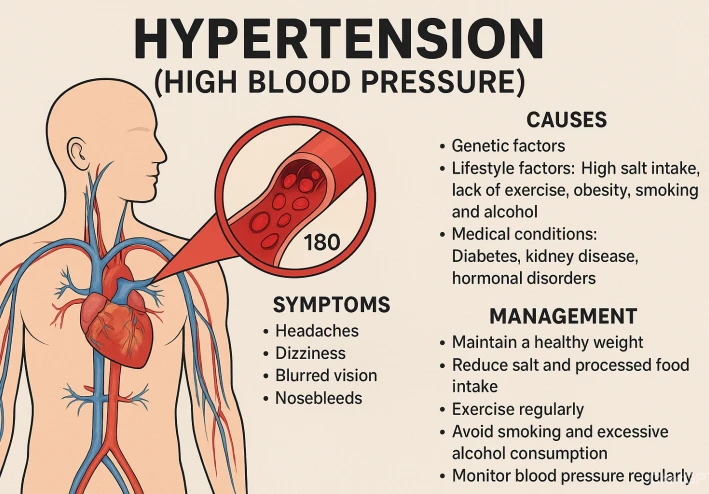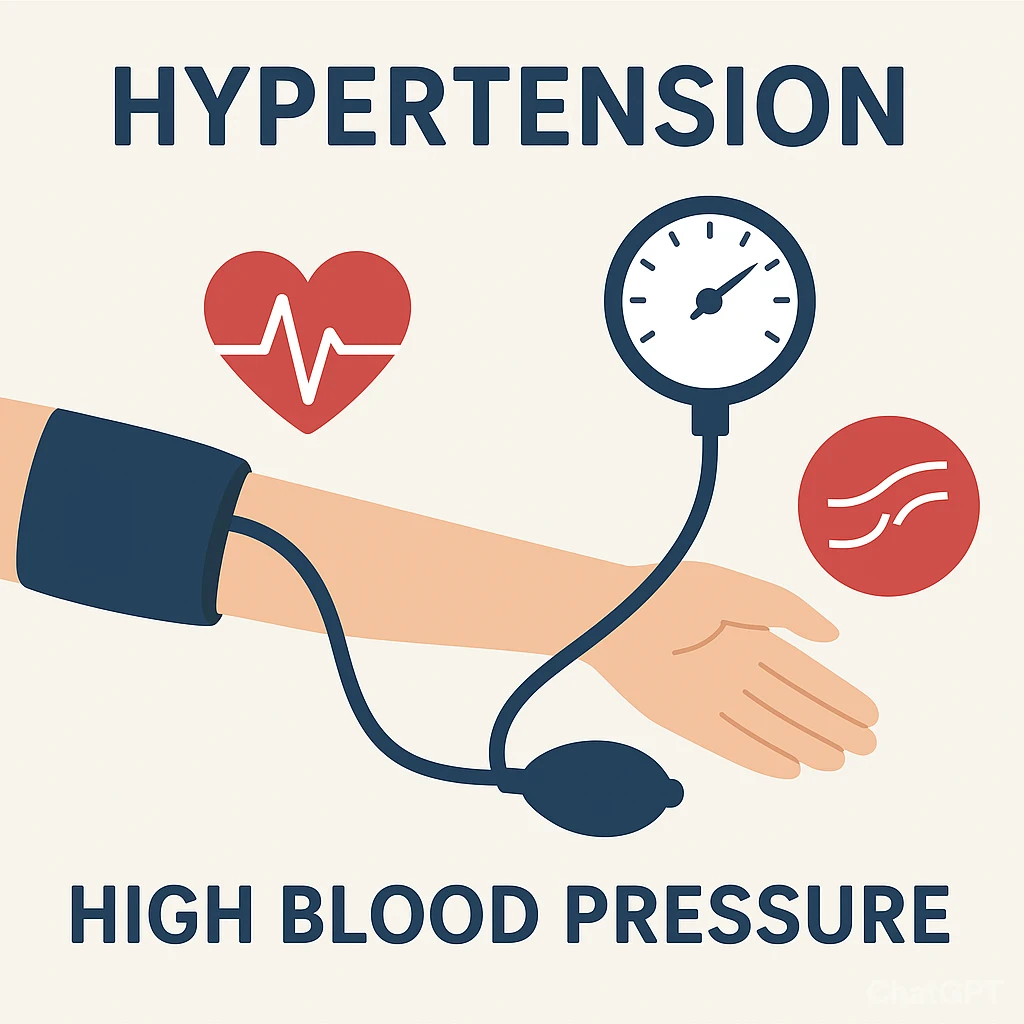
Hypertension(High Blood Pressure)
Hypertension (High Blood Pressure
Introduction:
Hypertension, commonly known as high blood pressure, is one of the most prevalent chronic conditions worldwide. It occurs when the force of blood pushing against the walls of the arteries remains consistently high, placing excessive strain on the heart and blood vessels. Often referred to as the “silent killer,” hypertension usually shows no obvious symptoms in its early stages, increasing the risk of severe complications if left undetected and untreated.
Causes of Hypertension:
The causes of high blood pressure are generally divided into two main types:
1. Primary (Essential) Hypertension: This is the most common form and develops gradually over time without a specific identifiable cause. Genetic factors, aging, and lifestyle choices often play a major role.
2. Secondary Hypertension: This type results from underlying health conditions such as kidney disease, adrenal gland disorders, certain medications, or excessive consumption of salt and alcohol.
Symptoms:
In most cases, hypertension does not cause noticeable symptoms. However, when blood pressure reaches dangerously high levels, patients may experience severe headaches, dizziness, nosebleeds, or blurred vision. For this reason, regular blood pressure monitoring is recommended, even in the absence of symptoms.
Complications:
If left untreated, high blood pressure can lead to serious health problems, including:
Heart disease and atherosclerosis (hardening of the arteries).
Stroke.
Kidney failure.
Vision loss due to damage to the blood vessels in the eyes.
Prevention and Treatment:
Hypertension can be prevented or managed effectively through lifestyle changes and medical treatment when necessary. Preventive measures include:
Following a healthy diet rich in fruits and vegetables while reducing salt intake.
Engaging in regular physical activity.
Maintaining a healthy weight and avoiding obesity.
Quitting smoking and limiting alcohol consumption.
Monitoring blood pressure regularly and taking prescribed medications as directed by a healthcare professional.
Global and regional statistics
Diagnosis and classification of blood pressure levels
Advanced treatments and medications
Dietary approaches like the DASH diet
Future research and innovations
Types of Hypertension
1. Primary (Essential) Hypertension
Accounts for about 90–95% of cases.
Develops gradually over time with no clearly identifiable cause.
Risk factors include genetic predisposition, aging, unhealthy diet, lack of exercise, and chronic stress.
2. Secondary Hypertension
Caused by underlying medical conditions or external factors such as:
Chronic kidney disease.
Hormonal disorders (e.g., adrenal or thyroid disorders).
Certain medications (e.g., birth control pills, corticosteroids, or NSAIDs).
Excessive alcohol consumption or drug use.
Often appears suddenly and may be more severe than primary hypertension.
Conclusion:
Hypertension is a serious yet manageable condition if detected early and treated appropriately. Adopting a healthy lifestyle and undergoing regular medical checkups are essential steps in preventing its complications and maintaining overall well-being.































